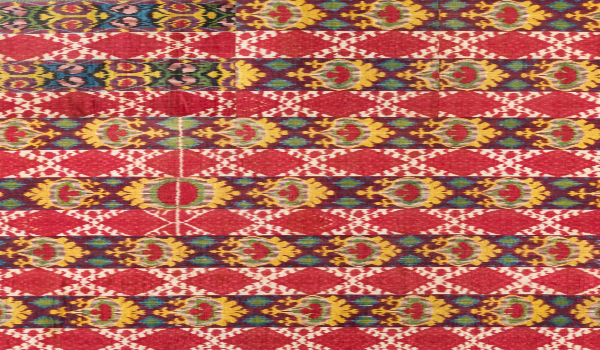
Power Of Pattern

Ikat is one of the world's most recognisable dyeing techniques. It involves resist dyeing yarns prior to dyeing and weaving the fabric, which gives ikat textiles their characteristic "blurriness". When weaving the yarns into fabric, the weaver must line up the dyed yarns - however, it is practically impossible to match up the yarns completely, which creates the blurs. Ikats with little blurriness, multiple colours and complicated patterns are more difficult to create and therefore often more expensive. However, the blurriness that is so characteristic of ikat is often prized by textile collectors.

The word ikat means 'to bind' in the Indonesian language, as this is how the resist is made for the first stage of dyeing. Yarns are bound with a tight wrapping, dyed, rebound in a different pattern and then dyed again. This process can be repeated to create more elaborate patterns. All the bindings are removed at the end of the dyeing process and then the yarns can be woven into cloth. Because the pattern is dyed onto the yarns themselves, ikat fabrics are patterned on both sides.

Central Asia’s textiles are rich with patterns influenced by the various cultures that travelled through or settled along the historic Silk Road. During the 19th and early 20th centuries, the region experienced a renaissance in ikat, which local populations called abrbandi (literally “cloud binding”). To create these distinctive textiles, artisans experimented with prevalent motifs in daily life and nature and distilled these shapes into compositions where colour and contrast were emphasized.
Power of Pattern showcases over 60 examples of visually dynamic Central Asian ikat robes and panels, generous gifts from the David and Elizabeth Reisbord Collection. Organized by motif, the exhibition examines how the region’s textile designers, dyers, and weavers used improvisation and abstraction to create textiles truly unique to this region.

February 3, 2019–July 28, 2019
